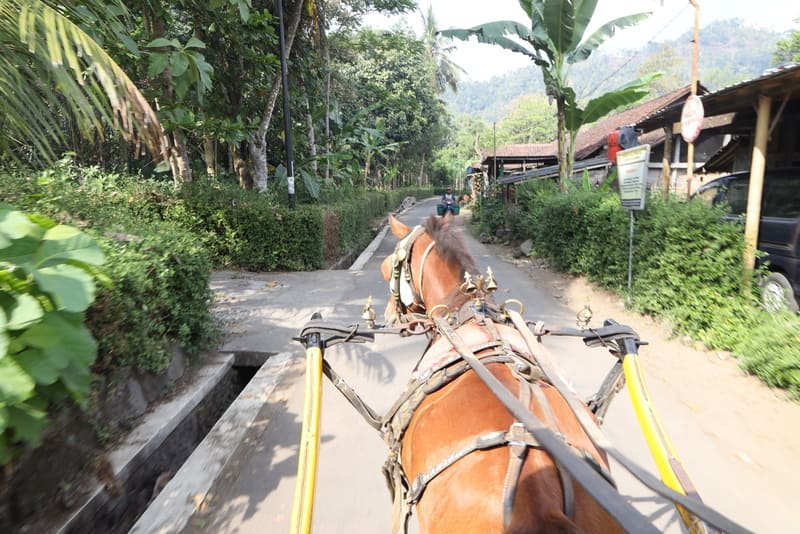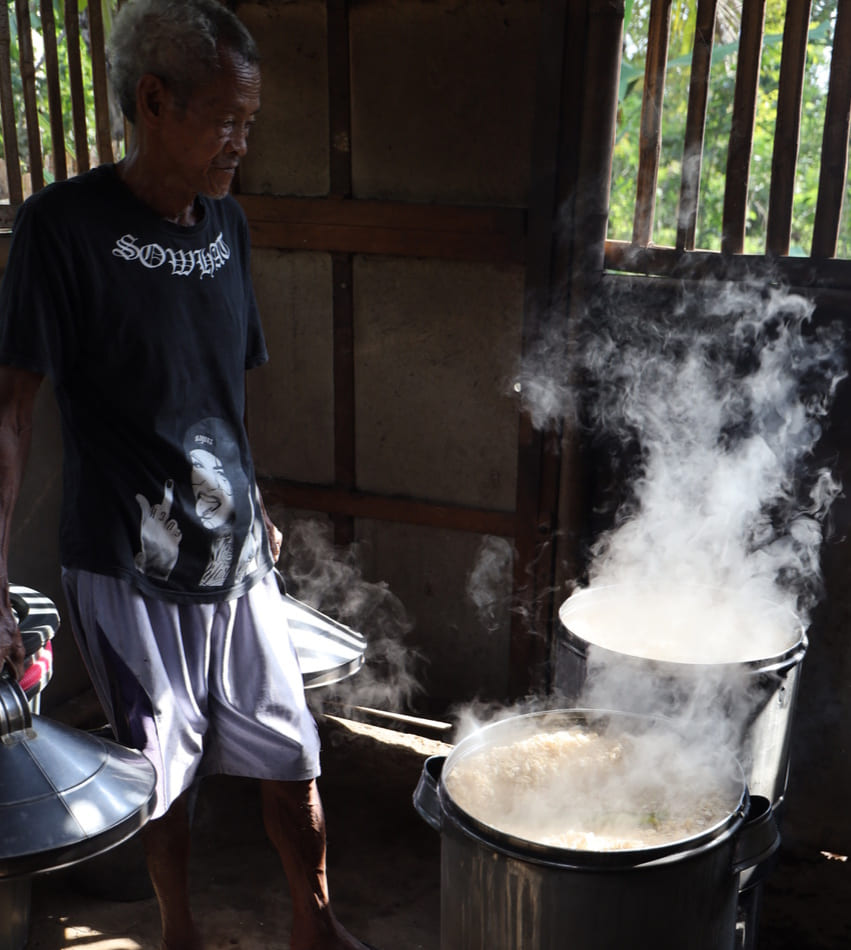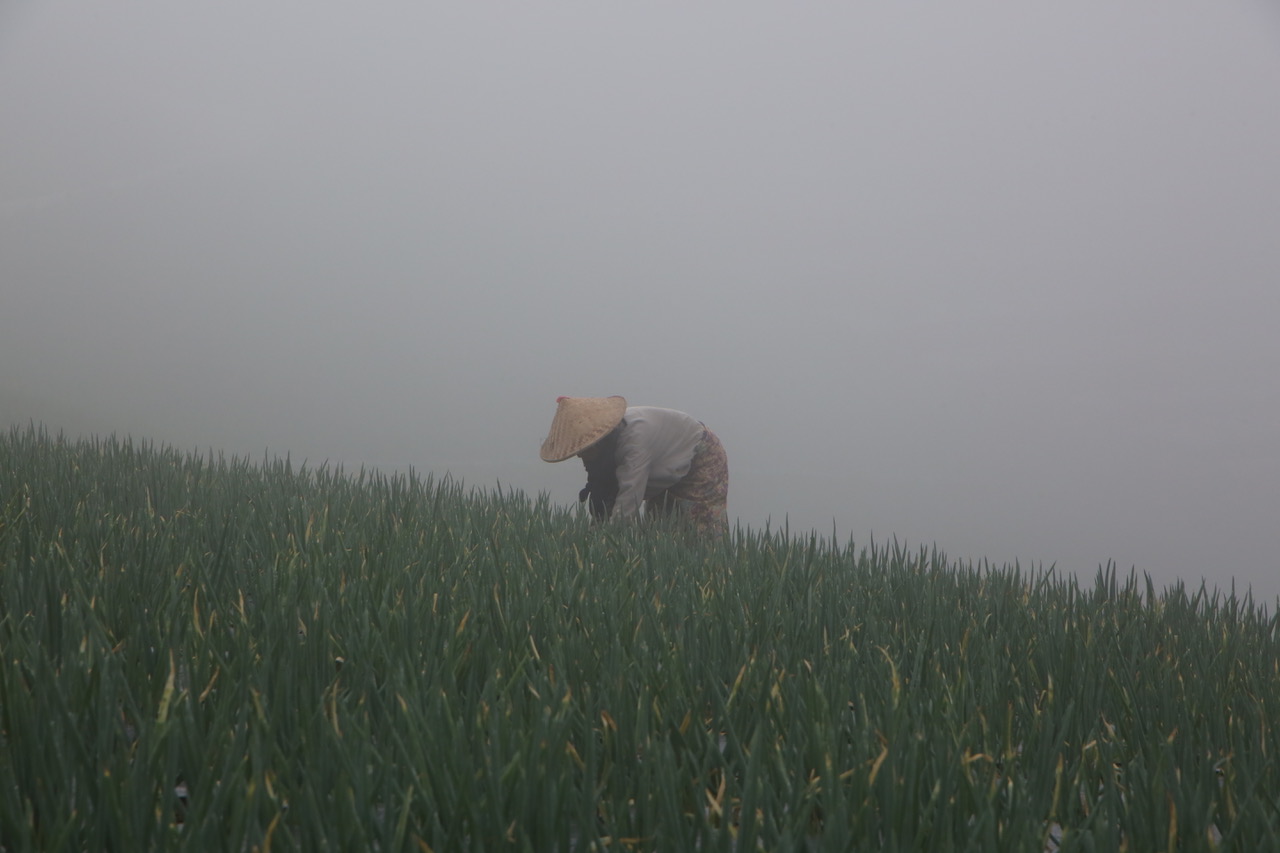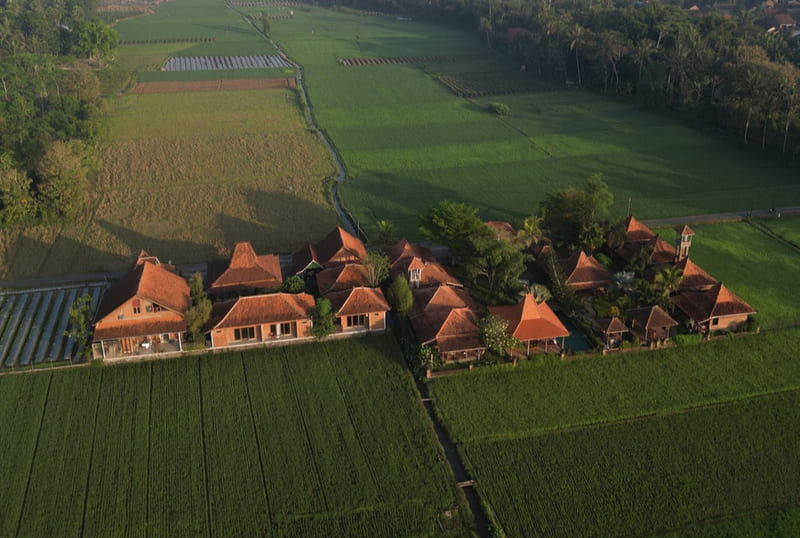A writer tells his first-person account about when he discovered a different side of Magelang: the home of the world icon, Borobudur Temple.
Lush paddy fields. The sea of greenery under the rising sun’s golden light and the blue sky above cast a perfect summer morning. I cannot help myself be poetic. I am on a bicycle ride along these rice fields around the Borobudur Temple. Nearby a tree, I make my first stop and steal a conversation with two villagers who give me tips on what I can do to make my visit different from the past ones, when the sole focus was on the Borobudur Temple and the tantalising food stalls around it.
I continue the ride and come to a turn, which is a popular sunset spot for the locals. This is a village called Wanurejo. The stupa of the Borobudur Temple now comes to view, letting me imagine the sight of the pink ball of fire going down along its side in the evening. What a charming moment it would be! A few metres from where I stand is a red-roofed house, constructed in the style of the Javanese Hindu-Buddhist temples. It stands right amid the rice fields, a red patch in the expanded greenery.
Candirejo: the green village
I slowly get into the tourist office of Candirejo, an eco-tourism village, recommended by the villagers earlier. The village is a fifteen-minute drive from the Borobudur Temple. Warmly welcomed to the seating room, I am served a cup of hot tea and wingko (sweet rice and coconut cake).
A dokar (small horse cart) trip brings me to a small house in Candirejo where an elderly couple are engaged in making tempe (fermented soybeans) — Indonesia’s favourite side dish that goes along with rice. The man steams the raw beans in two large containers while the woman is busy cutting banana leaves to wrap the finished tempe. The beans are being steamed using a wood fire. Once out of the containers, the beans are placed on a circular thatch tray and are dried using a hand-held fan. In the entire process, no electricity or electronic equipment is used, making it a very sustainable enterprise.
The village has several guest houses where travellers can get in and spend time chatting and having snacks and drinks. These places have names such as the one we get in – Omah Kopi – making them sound like usual warung or small restaurants, but are reserved for only travellers coming from outside of the village. They basically do not function like typical restaurants. We are greeted by an old lady who lives there. She brings us traditional snacks like fried cassava and banana fritters along with tea. No tissues are provided as the village sticks to its stance of going 100% green.
The next day, I set off for a unique village that lies on the lap of a volcano, which last erupted sometime in the 18th century. Mount Sumbing, which you can see on a diagonal line with the Borobudur Temple early morning on clear sky days, is home to the village of Dusun Butuh, popularly called Nepal van Java. As I am not lucky enough to see the colourful houses of the village in a flow-down pose down the mountain owing to thick fog, I decide to take a motorcycle to go up. Life here is like hanging on to some tree branches, but for the natives of Dusun Butuh, especially for the bike warrior I am pillion-riding with, it is their best comfort zone.
Around the village are vegetable gardens spread all over the mountain’s foot. Like in Candirejo, the villagers in Dusun Butuh are particular about not throwing plastic recklessly. On our way up, my guide stops quickly to remind an outsider not to put any Styrofoam box on the roadside. He gets off the bike and guides the man to a bin where the latter can deposit the trash appropriately.
Sukomakmur: the vegetable paradise
Sukomakmur is located in the west of Dusun Butuh (Nepal van Java). The relentless fog means I cannot see the village nor the vegetable cultivation in their resplendent best. However, I opt for a walk along the veggie plantations here and chat with ladies working on scallion fields. I can only see their outlines as I get within 10 metres from them. Closer now, their conical hat, shirt and sarung assume form and colours. The flowing fog is still thick enough to hide their smile.
Just like Dusun Butuh on the other side, the Sukomakmur vegetable fields flow down from the foot of Mount Sumbing. Being spread all over, the Sukomakmur veggie fields have earned the name ‘Negeri Sayur’ (Land of Vegetables). Visitors are more than welcome to learn agricultural techniques or buy vegetables from the farmers here. All the farmers are based in the villages surrounding Mount Sumbing, and the vegetable gardens are their collective effort.
You can find out more about how to book tours around Candirejo on the following website: https://candirejo.com. Dusun Butuh (Nepal van Java) and Sukomakmur are approximately an hour’s drive from the Borobudur Temple. All images are courtesy of Pramod Kanakath.




